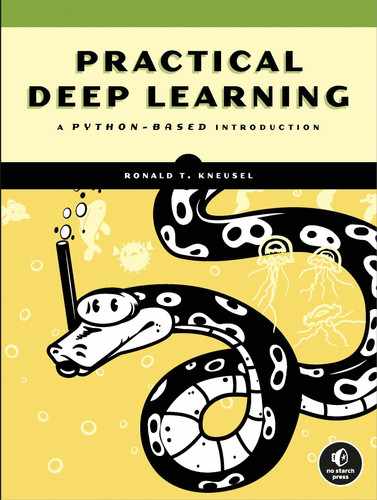If you�¢??ve been curious about machine learning but didn�¢??t know where to start, this is the book you�¢??ve been waiting for. Focusing on the subfield of machine learning known as deep learning, it explains core concepts and gives you the foundation you need to start building your own models. Rather than simply outlining recipes for using existing toolkits, Practical Deep Learning teaches you the why of deep learning and will inspire you to explore further. All you need is basic familiarity with computer programming and high school math�¢??the book will cover the rest. After an introduction to Python, you�¢??ll move through key topics like how to build a good training dataset, work with the scikit-learn and Keras libraries, and evaluate your models�¢?? performance. You�¢??ll also learn: �¢?�¢How to use classic machine learning models like k-Nearest Neighbors, Random Forests, and Support Vector Machines You�¢??ll conduct experiments along the way, building to a final case study that incorporates everything you�¢??ve learned. All of the code you�¢??ll use is available at the linked examples repo. The perfect introduction to this dynamic, ever-expanding field, Practical Deep Learning will give you the skills and confidence to dive into your own machine learning projects.
�¢?�¢How neural networks work and how they�¢??re trained
�¢?�¢How to use convolutional neural networks
�¢?�¢How to develop a successful deep learning model from scratch
Table of Contents
- Cover Page
- Title Page
- Copyright Page
- Dedication
- About the Author
- About the Technical Reviewer
- BRIEF CONTENTS
- CONTENTS IN DETAIL
- FOREWORD
- ACKNOWLEDGMENTS
- INTRODUCTION
- 1 GETTING STARTED
- 2 USING PYTHON
- 3 USING NUMPY
- 4 WORKING WITH DATA
- 5 BUILDING DATASETS
- 6 CLASSICAL MACHINE LEARNING
- 7 EXPERIMENTS WITH CLASSICAL MODELS
- 8 INTRODUCTION TO NEURAL NETWORKS
- 9 TRAINING A NEURAL NETWORK
- 10 EXPERIMENTS WITH NEURAL NETWORKS
- 11 EVALUATING MODELS
- 12 INTRODUCTION TO CONVOLUTIONAL NEURAL NETWORKS
- 13 EXPERIMENTS WITH KERAS AND MNIST
- 14 EXPERIMENTS WITH CIFAR-10
- 15 A CASE STUDY: CLASSIFYING AUDIO SAMPLES
- 16 GOING FURTHER
- INDEX
